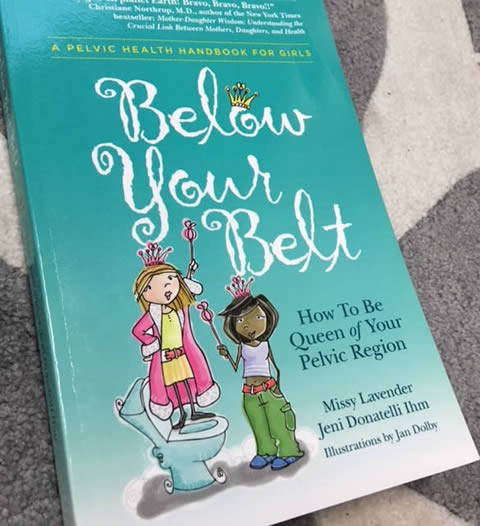
Tips for Teaching Your Daughters About Endometriosis
Endometriosis affects 1 in 10 women and girls. The delay for diagnosis averages 7 years! How early should you start the discussion about this debilitating condition? As a pelvic health physical therapist, I believe this conversation should start not long after your daughter begins menstruating. As moms, we need to be aware about what is “normal” versus “abnormal”. We only know if we ask them questions. It can be a scary time for girls when they first get their periods, and it can be devastating if there is a lot of pain. We need to be a strong support system for our daughters, but also educate them on the norms.
Is it normal to have cramping? Yes. It’s the uterus contracting to shed the lining of the uterus. Mild to moderate cramping can often be helped with Motrin, heating pads, gentle exercise and adequate hydration. Be careful to not dismiss her if she comes to you complaining of severe cramping during her cycle. If her pain is so severe she is vomiting, please do not accuse her of being “too dramatic”. I’ve heard these stories in my office from my patients as they relay their history and how long they complained of severe pain, only to be accused of playing up their pain too much. It only delayed their treatments and added psychological factors as they were made to feel that their pain wasn’t that bad or worse…not real at all.

If you are not a health care provider, you may find it difficult to start this conversation with your daughter. I’m a pelvic health therapist and I even wondered the best way to teach my 10 year-old daughter! First, you need a respected manual that will give you accurate and clear information in simple terms to start discussing what normal developmental changes are in girls. For the past year off and on, we’ve been reading a great book — “Below Your Belt: How to Be Queen of Your Pelvic Region”.
This is a fantastic book and is the ultimate pelvic health handbook for girls. It covers pelvic anatomy (muscles and organs), bowel and bladder function, hygiene, puberty, menstruation and age-related changes that occur in the body…all necessary information for optimal pelvic health. It has tasteful illustrations and age-appropriate language to teach your girls accurate information about their bodies, the changes in their bodies and strategies to cope with these changes. While it makes no specific mention of endometriosis, it does mention UTI’s as a common occurrence in girlhood. You can read more about Endometriosis here.
Patient-oriented handouts are also available online at the International Pelvic Pain Society, and are helpful in defining and navigating this condition, in language designed to be understood at an 8th grade level. This organization additionally has helpful links to find providers in your area and around the globe.
I do not know if my daughter will be one of the 1 in 10 women and girls that has Endometriosis. But if she is, she will not have to listen to people telling her that her pain is “normal period pain”. She will not only have the support of her family, but also the knowledge to manage her pain. If she escapes the statistic, she will likely have many friends as she goes through middle school, high school and beyond that have Endometriosis. I hope the education I provide her sticks so she can offer support for these women. Let’s raise a smarter generation of girls that understand their bodies and get the care they need without delay.
For More Information
Read: Missy Lavender & Jeni Donatelli Ihm. “Below Your Belt: How to Be Queen of Your Pelvic Region”. Womens Health Foundation. 2015.
Visit: pelvicpain.org
Hopefully you now understand more about teaching your daughters about endometriosis. Be sure to check out more articles about endometriosis here.

